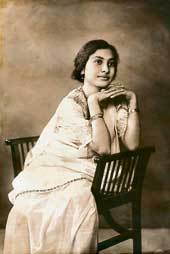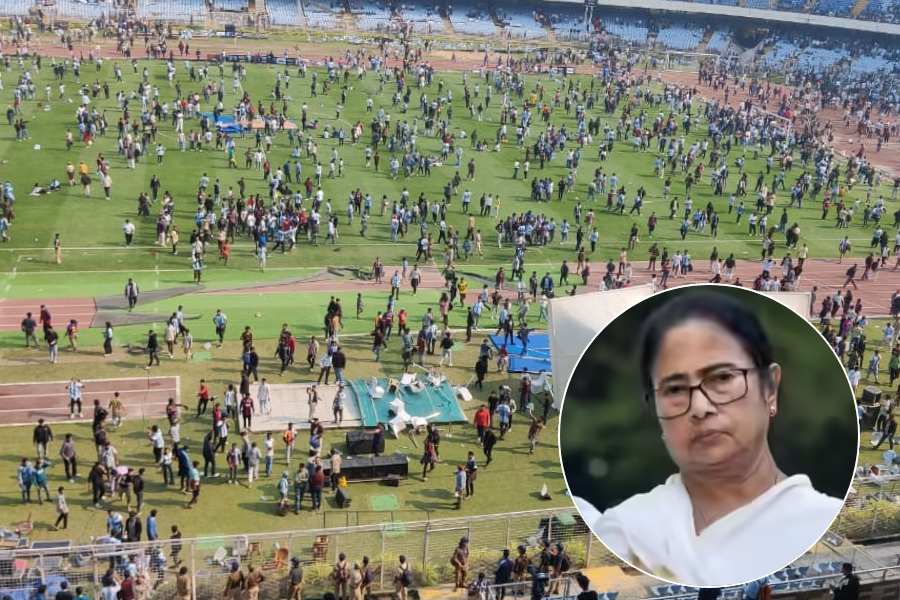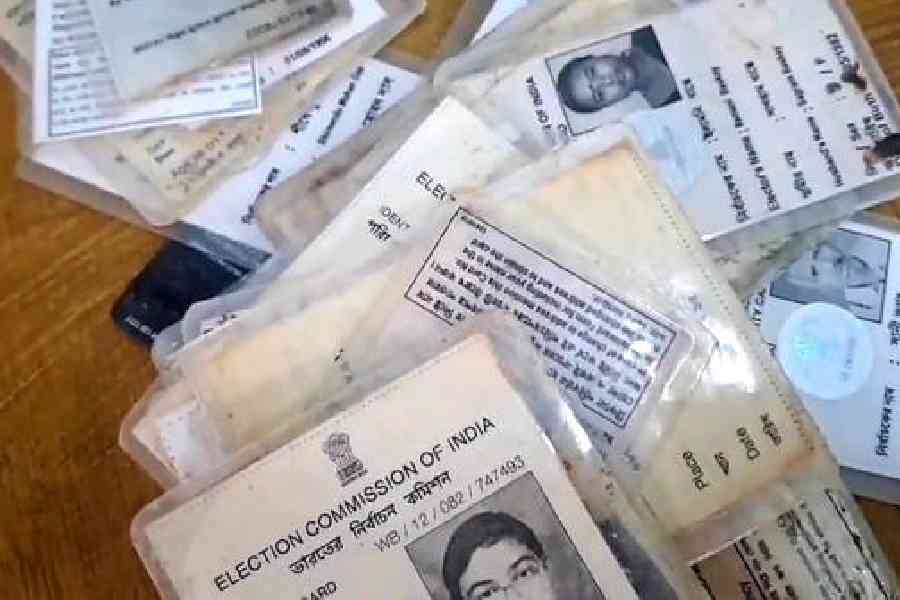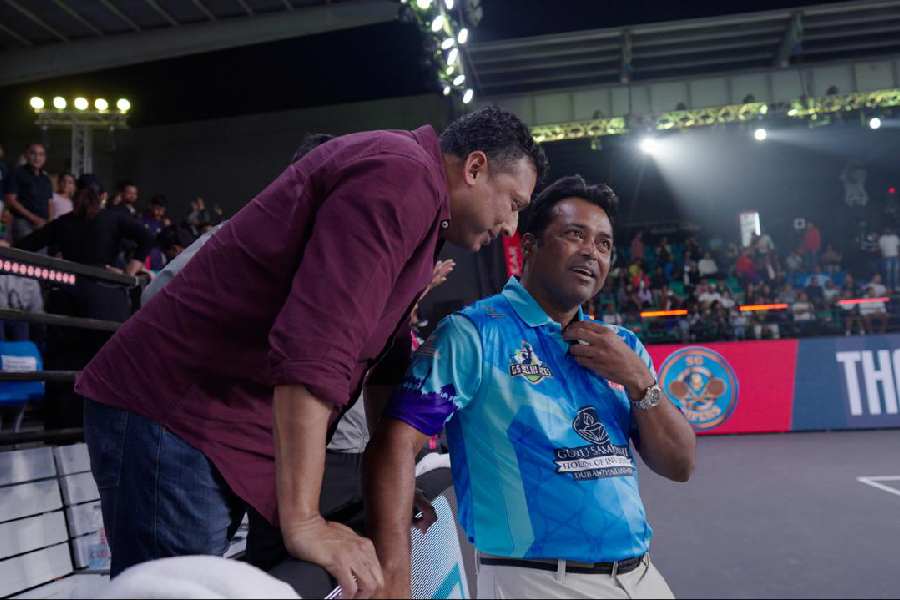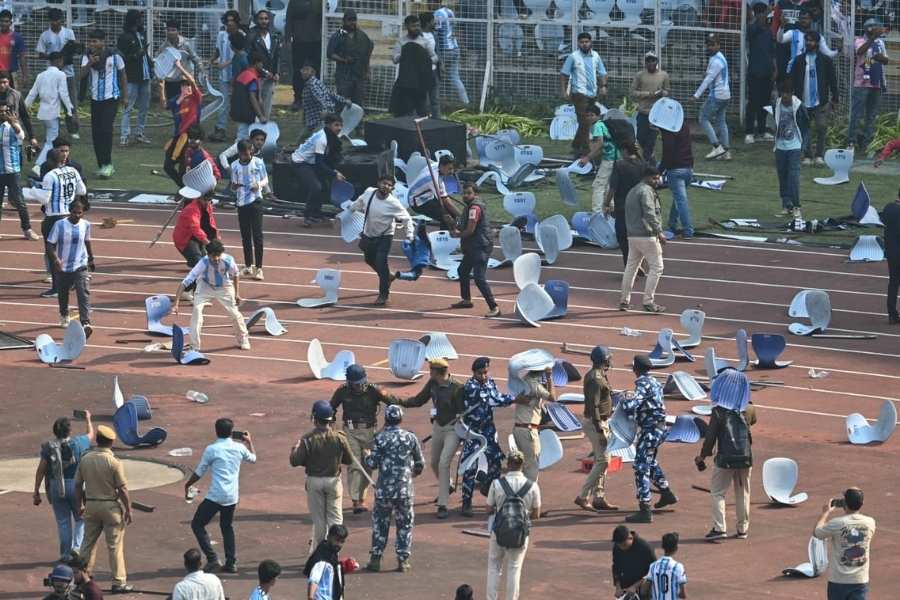 |
| A portrait by C. Guha |
Charu Guha was one of the pioneers in the field of studio photography in Calcutta. Self-taught, he initially opened a studio in Dhaka in 1910 that closed down after seven years.
After he moved to Calcutta, he began afresh and started his first studio in Harrison Road (Mahatma Gandhi Road) in 1920. Guha had earlier been trained as an artist, and now he acquired 1000 watt bulbs from Whiteaway Laidlaw so that he could take photographs in artificial light.
He made a name for himself by covering the great floods in north Bengal in 1922. Two years later he shifted to Albert Hall in College Street, known as Coffee House today.
An exhibition of C. Guha’s studio portraits is now on at the former studio, renamed BoiChitra. Books are sold here now, but the studio props and the camera are still displayed.
His existing prints and negatives were digitised and prints produced thereof. Apart from eminent people, ordinary people from all walks of life came to C. Guha Studio to get themselves photographed.
He visited Germany in 1931 to learn the latest tricks of the trade. He used to be commissioned to take all photographs of Mohun Bagan Club. At one time he had earned a fortune and caused a sensation by taking studio portraits that were airbrushed, a technology little known then.
The posed photographs of families and individuals on display are beautiful. They would be of interest to sociologists too. Middle class people did not bother to wear ironed clothes even when they got themselves photographed.
The artist Bhabani Laha’s soft focus portrait, music composer Raichand Boral and friend, Anandamoyee Ma and disciple, Nepal Maharaja, the farewell for Professor Sushobhan Sarkar of Presidency College and a wedding at a stately home in Sovabazar are all there. This is an exhibition worth visiting.
Nine galleries in Calcutta have collaborated to begin an ambitious project named Art Against Terrorism, with one exhibition opening on each successive day in one of the galleries involved.
Like most gallery shows, it is a mixed bag that called for ruthless separation of wheat from chaff. It began with the opening at Aakriti gallery last Tuesday. Jogen Chowdhury’s presence notwithstanding, this exhibition is quite banal. The globe that is actually a grenade and the sword with udders are worth a look, if only for their crudity.
Akar Prakar is better curated. Samir Roy’s hybrid with a doleful expression and weapons as body parts, Aditya Basak’s skeletal Pegasus (or is it an X-ray?), Chintan Upadhyay’s homunculi, Mithu Sen’s projection of an invasion of critters, Samit Das’s video of a ladybird getting the heebie-jeebies and Pooja Iranna’s disjunctive arrangement of staple pins are highpoints of this exhibition.
Gandhara Art gallery is mostly installations. As an idea, the most interesting is Butterfly Effect: The Inerier (whatever it may mean), a workshop on terrorism with Santiniketan students from disturbed areas, and facilitated and coordinated by their teacher Sanchayan Ghosh. They have turned a room with regulated temperature into a sort of lab where butterflies are being hatched in keeping with its title.
Even a slight variation in prevailing conditions would prove cataclysmic, as in the states from which these students originate. Graffiti is scribbled on all the walls and a bookcase displays titles on weaponry. It is well thought out but the execution could have been more coherent.
Adip Datta’s arrangement of bedroom furniture in muslin bandages and a tiny TV showing egregious acts of terrorism does not waste a word to convey the idea of how violence has entered our most private spaces.
Pradip Kumar Patra’s torso with a “fan” of scythes for a head is also succinct, as is Krishna Murari’s furry man with a flame burning inside its head that is a gas mask.
Unless one has seen this collaborative project in its entirety it is not possible to pass judgment, but one throughout felt the lack of a competent curator.

